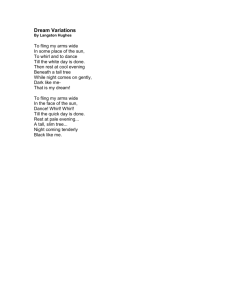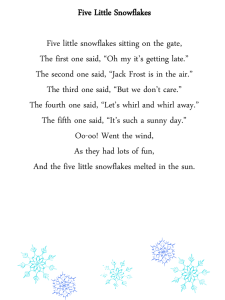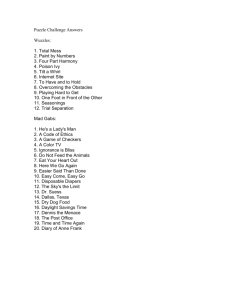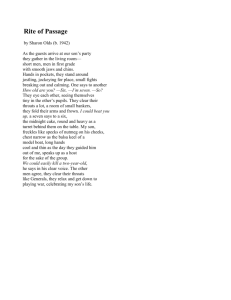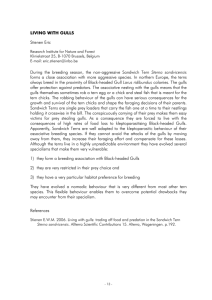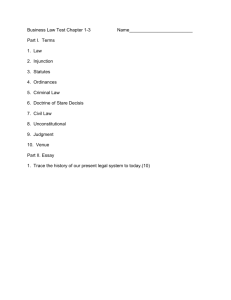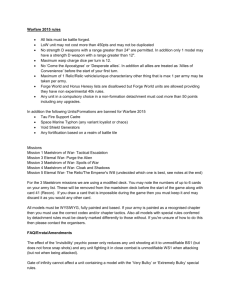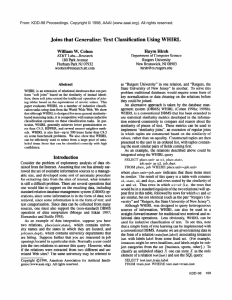Document 12735671
advertisement
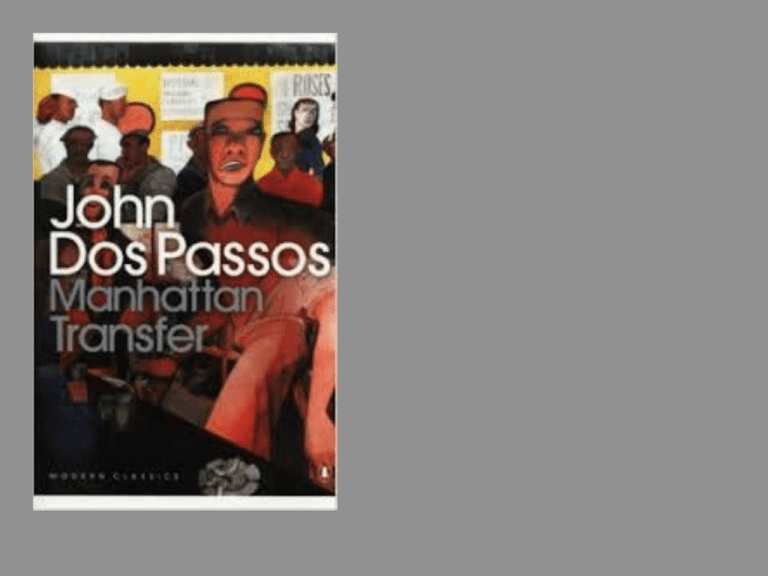
“The maelstrom of modern life has been fed from many sources: great discoveries in the physical sciences, changing our images of the universe and our place in it; the industrialization of production, which transforms scientific knowledge into technology, creates new human environments and destroys old ones, speeds up the whole tempo of life, generates new forms of corporate power and class struggle; immense demographic upheavals, severing millions of people from their ancestral habitats, hurtling them halfway across the world into new lives; rapid and often cataclysmic urban growth; systems of mass communication, dynamic in their development, enveloping and binding together the most diverse people and societies; increasingly powerful national states, bureaucratically structured and operated, constantly striving to expand their powers; mass social movements of people, and peoples, challenging their political and economic rulers, striving to gain some control over their lives; finally, bearing and driving all these people and institutions along, an ever-expanding, drastically fluctuating capitalist world market. In the twentieth century, the social processes that bring this maelstrom into being, and keep it in a state of perpetual becoming, have come to be called "modernization." These world-historical processes have nourished an amazing variety of visions and ideas that aim to make men and women the subjects as well as the objects of modernization, to give them the power to change the world that is changing them, to make their way through the maelstrom and make it their own.” -Marshall Berman “MORTONSIGNSTHEGREATERNEWYORKBILL COMPLETESTHEACTMAKINGNEWYORKWORLD’S SECONDMETROPOLIS”(22) “In the mid-nineteenth century, the invention of the match brought forth a number of innovations which have one thing in common: a single abrupt movement of the hand triggers a process of many steps[…] With regard to countless movements of switching, inserting, pressing, and the like, the "snapping" by the photographer had the greatest consequences. Henceforth a touch of the finger sufficed to fix an event for an unlimited period of time. The camera gave the moment a posthumous shock, as it were. Haptic experiences of this kind were joined by optic ones, such as are supplied by the advertising pages of a newspaper or the traffic of a big city. Moving through this traffic involves the individual in a series of shocks and collisions. At dangerous intersections, nervous impulses flow through him in rapid succession, like the energy from a battery. Baudelaire speaks of a man who plunges into the crowd as into a reservoir of electric energy. Circumscribing the experience of the shock, he calls this man "a kaleidoscope endowed with consciousness." Whereas Poe's passers-by cast glances in all directions, seemingly without cause, today's pedestrians are obliged to look about them so that they can be aware of traffic signals. Thus, technology has subjected the human sensorium to a complex kind of training. There came a day when a new and urgent need for stimuli was met by film. In a film, perception conditioned by shock was established as a formal principle. What determines the rhythm of production on a conveyor belt is the same thing that underlies the rhythm of reception in the film.” -Walter Benjamin “On Some Motifs in Baudelaire” “Benjamin ‘elaborates two different kinds of ‘experience’: (1) Erlebnis, immediate or shock experience, and (2) Erfahrung, a fuller and more reflective state of consciousness ... The context of Erlebnis [is] the city, which offers the boundaries and thresholds that fracture modern experience, disrupting any sense of it as homogeneous” -Scott McCracken “Three gulls wheel above the broken boxes, orangerinds, spoiled cabbage heads that heave between the splintered plank walls, the green waves spume under the round bow as the ferry, skidding on the tide, crashes gulps the broken water, slides, settles slowly into the slip. Handwinches whirl with jingle of chains. Gates fold upwards, feet step out across the crack, men and women press through the manuresmelling wooden tunnel of the ferryhouse, crushed and jostling like apples fed down a chute into a press” (15) “Three gulls wheel above the broken boxes, orangerinds, spoiled cabbage heads that heave between the splintered plank walls, the green waves spume under the round bow as the ferry, skidding on the tide, crashes gulps the broken water, slides, settles slowly into the slip. Handwinches whirl with jingle of chains. Gates fold upwards, feet step out across the crack, men and women press through the manuresmelling wooden tunnel of the ferryhouse, crushed and jostling like apples fed down a chute into a press” (15) “Three gulls wheel above the broken boxes, orangerinds, spoiled cabbage heads that heave between the splintered plank walls, the green waves spume under the round bow as the ferry, skidding on the tide, crashes gulps the broken water, slides, settles slowly into the slip. Handwinches whirl with jingle of chains. Gates fold upwards, feet step out across the crack, men and women press through the manuresmelling wooden tunnel of the ferryhouse, crushed and jostling like apples fed down a chute into a press” (15) “Opposite him the Elliedoll was speaking” (272-3) “Ellen felt herself sitting with her ankles Crossed, rigid as a porcelain figure under her clothes” (355) “Ellie in a gold dress, Ellie made of thin gold foil absolutely lifelike beckoning from every window” (327) Mannequins express “uncanny changes wrought upon bodies and objects in the high capitalist epoch [… particularly the] remaking of the body (especially the female body) as commodity [… They evoke] an uncanny confusion between life and death” (Foster 126) “Like the work of art, woman in the age of technological reproduction is deprived of her aura; the effects of industry and technology thus help to demystify the myth of femininity as a last remaining site of redemptive nature. In this sense modernity serves to denaturalize and hence to destabilize the notion of an essential, God-given femaleness. Yet this figure of the woman as machine can also be read as the reaffirmation of a patriarchal desire for technological mastery over woman, expressed in the fantasy of a compliant female automaton and in the dream of creation without the mother” (Rita Felski, 20)
